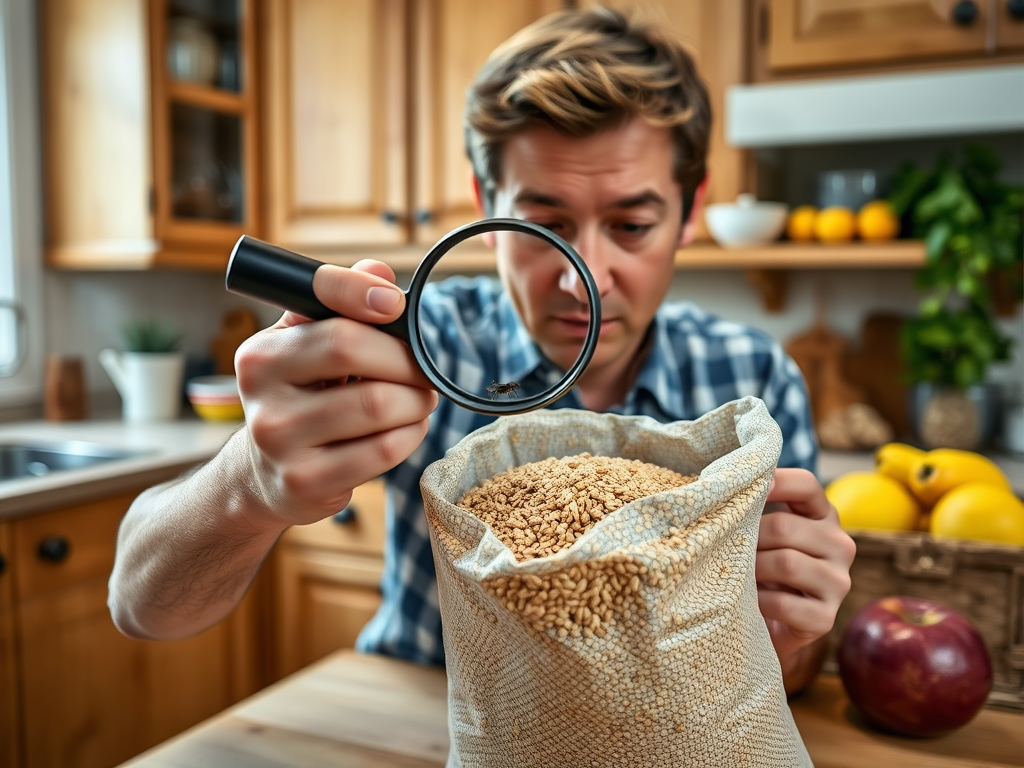Weevils can be the bane of any homeowner, scuttling through pantries and laying waste to your cherished food supplies. These tiny beetles, often mistaken for harmless pests, can wreak havoc on grains, dried fruits, and even nuts. If you’ve found yourself facing the frustrating challenge of weevil infestations, you are not alone. Many people overlook the presence of these pests until they’ve multiplied into a full-blown problem. Understanding how to get rid of weevils is not just about extermination; it’s about reclaiming your space and keeping your home free of food-invading nuisances. In this guide, we will walk through the process step-by-step to ensure that you clear out those unwelcome visitors once and for all.
First, we need to recognize what weevils are and how they operate. Being educated about their habits—such as where they lay eggs and what environments they thrive in—gives you the upper hand in this ongoing battle. Armed with this knowledge, you can take practical steps to rid your home of these pests and keep them from coming back. Let’s dive into the world of weevils and uncover the best strategies for complete eradication.
Understanding Weevils: A Brief Overview

Weevils comprise a large family of beetles, characterized by their elongated snouts and penchant for feeding on plant material. Though there are many varieties, the most common ones found in homes are the rice weevil, the granary weevil, and the flour weevil. Typically, these pests find their way into your home through infested food products, often packaged grains or dried goods that you might purchase from the store. Their life cycle, which allows them to reproduce quickly, means that what starts as a minor annoyance can swiftly escalate into a much bigger problem if left unchecked.
To successfully get rid of weevils, you have to identify the infestation effectively. Knowing how to spot them is crucial, and there are several signs that should alert you: small holes in food packaging, webbing or clumped grains, and the presence of adult weevils or larvae. Being aware of these indicators allows you to act quickly and decisively—the sooner you address the issue, the easier it will be to regain control.
Identifying Weevil Infestations

Some of the signs of a weevil infestation may be subtle, but with diligence, you can uncover them. Common indicators include faint holes in the packaging of your food, as these pests munch their way to access the good stuff inside. Additionally, grains may clump together due to weevil activity, and you might even see actual adult weevils creeping among your stored items. If you notice any of these signs, it’s time to take action.
- Inspect all pantry items regularly.
- Check for damaged packaging.
- Look for clumping or webbing within food products.
Step 1: Conduct an Inventory of Your Pantry
Your first step in the weevil eradication process is to conduct a thorough inventory of your pantry. This means being vigilant and checking each and every item for signs of contamination. Pay special attention to grains, flours, nuts, and any dried fruits, as these tend to be weevil favorites. If you discover any compromised products, seal them in a plastic bag before disposal to avoid spreading the infestation further throughout your home. Remember: don’t be tempted to just throw away items in the open—sealing them properly is critical for containment.
Step 2: Deep Clean Your Pantry
A deep cleaning of your pantry is essential to eradicate weevils completely. First, you should remove all items, giving you full access to shelves and corners. Once the shelves are bare, it’s time to vacuum the area thoroughly. A vacuum cleaner can effectively suck up any stray weevils or eggs that may have laid dormant in the dust and debris. Once vacuumed, use soapy water or a vinegar solution to wipe down all surfaces. Heated vinegar solutions can be particularly effective at breaking down webbing and killing any lingering pests.
| Cleaning Method | Effectiveness | Notes |
|---|---|---|
| Vacuuming | High | Removes visible pests and eggs |
| Soapy Water | Medium | Cleans surfaces but not as effective on pests |
| Vinegar Solution | High | Kills pests and sanitizes surfaces |
Step 3: Seal Remaining Food Items
After cleaning, the next step is crucial: seal any remaining food items tightly. To ensure that you don’t find yourself facing another wave of weevils, invest in airtight containers made of glass or heavy-duty plastic. These containers should be designed to keep out any potential invaders. Always check the integrity of packaging before returning items to your pantry. Any damage can provide an entry point for weevils, so it’s wise to discard old or damaged containers. Implementing these preventive measures is one of the best strategies to ensure a long-term solution against weevil infestations.
- Always store grains and food products in airtight containers.
- Check packaging before storing.
- Label containers with dates for freshness management.
Step 4: Implement Preventive Measures
The fight against weevils doesn’t end with a successful cleanup. Establishing a regular cleaning routine is essential to maintain a weevil-free pantry. Make it a habit to inspect and clean your pantry every few months to prevent future infestations. Pay attention to expiration dates—older food products are more prone to harbor pests. If possible, aim to buy grains and packaged foods in quantities that you can use quickly to minimize the risk of weevil-related issues.
Conclusion
In conclusion, getting rid of weevils is not merely about extermination; it involves a comprehensive approach of cleaning, sealing, and preventive measures. By diligently inspecting your pantry, disposing of contaminated items, and maintaining a clean environment, you can effectively manage and prevent future infestations. Remember that education is your most powerful tool in the battle against pests. With these strategies in hand, you’re better prepared to reclaim your space and savor the food you love without the worry of unwelcome intruders.
Frequently Asked Questions
- What are weevils? Weevils are small beetles that commonly infest grains, nuts, and dried foods.
- How do I know if I have a weevil infestation? Signs include small holes in packaging, clumping of grains, or the presence of adult weevils or larvae.
- Can weevils harm me or my pets? Weevils are not harmful to humans or pets, but they can contaminate food.
- How do I prevent weevils from coming back? Seal food in airtight containers and regularly clean your pantry.
- Are there natural remedies for getting rid of weevils? Yes, some methods include using essential oils such as peppermint or employing diatomaceous earth.


